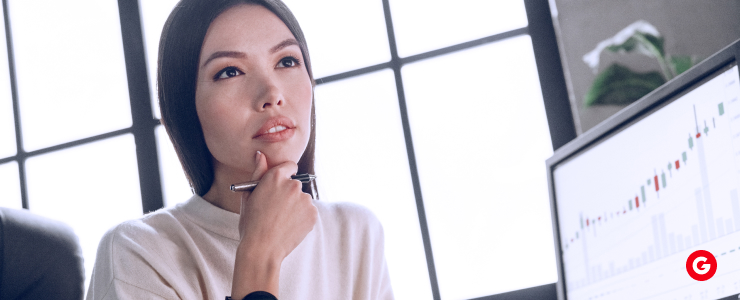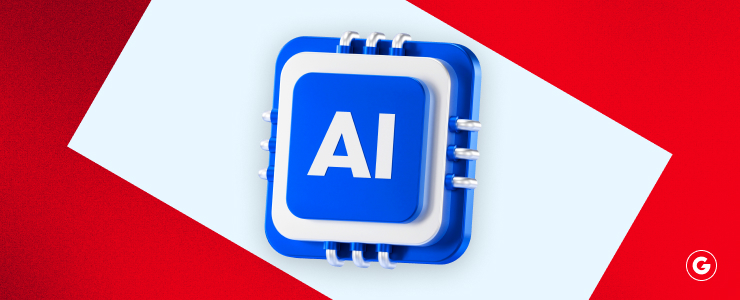Has manual forex trading been killed? This article examines how artificial intelligence (AI) will transform the forex market and forex trading by 2026.
One-line answer: Manual forex trading is not killed completely yet, but AI is taking over the game by 2026.
Then why continue reading? Being aware of the effect of AI might assist you in escaping the strategies that are dated and making decisions related to trading that are more intelligent and quicker.
What Is Manual Forex Trading?
Manual forex trading: This is where you decide whether to buy or sell. You learn charts, news, and strategies, and use tools such as the MT4 trading platform or FXGiants to make a trade. It takes talent, training, and plenty of TV time.
It is under your control. So much pipe, so much move—it is all you.
Manual forex trading may, however, be slow and emotional. Traders are prone to doing things out of fear or greed. Mistakes happen. Their AI will help, with no emotions, no tiredness, and no ignored signals.
Do not disregard manual forex trading, in particular, if you are fond of technical and fundamental analysis. Loads of traders continue to believe in their guts and place orders via MetaTrader 4 or any other tools.
But here is the truth. Are human decisions sufficient in a forex market where data moves fast?

The Role and Rise of AI by 2026
So here is the setting: it is 3 a.m., an unexpected economic report has just crossed the markets of Japan, and a currency pair is racing. You’re asleep. Your AI bot is not. It has already taken the trade, analyzed the spike, worked out the risk, and made the perfect entry. And all the time you were snoring.
AI never becomes weary, emotional, or inattentive. It does not incur losses. It does not hold back. And it certainly does not forget to place a stop-loss. You could be staring at charts on your MT4 trading platform all day and all night, but your AI bot has already scanned 10,000 patterns in a second.
In 2026, AI is not a tool—it is your trading partner.
What Is the Reason That AI Is Developing So Rapidly?
Because it is effective.
Trading bots are now being powered by AI, which uses deep learning, real-time sentiment analysis, and historical data to make decisions in milliseconds. They do not count on a single indicator or a single strategy. They evolve and experiment on what is effective and what is not and get the best out of their choices without wasting out.
Most major brokers, such as FXGiants, have adopted this evolution. Their servers, particularly MetaTrader 4 (MT4), are now piping hot and loaded with AI-powered plugins, trading advisors, and auto-execution modules. It implies that one does not have to be a tech genius to employ AI; they simply have to understand how to operate the necessary tools.
Even CFD trading has changed. AI has the capability to scan several markets, including forex, commodities, and indices, at the same time. It identifies trends and reversals well, unlike the human eye, which does not.
What Is Changing?
- Speed: The AI can respond to price fluctuations and economic statistics in milliseconds. People just cannot keep up with the speed.
- Accuracy: The machine learning models become more accurate as they train. Every click makes your AI improve.
- Volume: You may follow three or four currency pairs. Hundreds, at a time, are tracked by AI.
- Risk Management: AI does not simply trade; it computes position sizes, moves the stop, and makes sure that risk is kept under control.
This change is enormous. Manual traders have quickly resorted to AI-generated insights to validate their decisions. It is not that you are being replaced; you are being upgraded.
AI is no longer only for institutions.
Many years ago, state-of-the-art trading algorithms were a Wall Street-only product. Not anymore. In as little as 2026, ordinary traders like yourself will be able to access the power of AI using intuitive interfaces such as Fxgiants. Their web trading platforms provide:
- Programmed AI trading robots
- The AI signal indicators are installed on MetaTrader 4.
- Online pattern recognition
- Social media, news, and price action-based market sentiment analysis
You can allow the AI to make suggestions to you even when you are just starting in forex. Need to have the control all to yourself? You may still intervene manually. Wish to have complete automation? Auto-trading just needs to be turned on. It is autonomous, like turning your car to autopilot and manual.
And, finally, AI in forex trading is not about eradicating human participation; it is about their improvement. Empowering you, rather than removing the steering wheel from your hands.
What Are the Potential Risks and Regulatory Implications?
But what occurs when the AI gets it wrong? Or is he too aggressive a trader? That is a legitimate danger. The over-optimized bot is capable of blowing your account unless you monitor it.
Then there is the trust issue. Would you leave your money to a machine?
Regulators are stepping up. Governments and financial institutions are establishing regulations concerning AI in the trading business in 2026. For instance:
- AI bots have to be explorable (you should understand what the bot is doing and why).
- Risk limits should be precise.
- Manual override options ought to exist at all times.
The trading organizations, such as FXGiants, are ahead of the trend. They also make sure that AI products on their MT4 trading platform are up to all regulatory requirements and secure user accounts.
Nevertheless, you need to be in the know. Putting unquestioning faith in an AI may bring losses, as putting unquestioning faith in news headlines may bring.
Real-World Case Studies
AI in forex trading is not a far-fetched idea; it is already transforming actual strategies in financial giants worldwide. These are three of the exemplary cases in countries that are at the forefront of the AI revolution in the financial sector:
1. China—CITIC Securities AI Adoption in FX Portfolio Management
The overall trend is that CITIC Securities, the largest brokerage in China, began to engage AI in its forex activities back in 2021. They had already implemented an in-house AI system by 2024, capable of following the news around the world, macroeconomic trends, and technical indicators in real-time.
Such a system enabled CITIC to dynamically allocate forex according to the changing sentiment and volatility. The result? The forex-based funds managed to eke out a 27 percent year-on-year return.
They even have their AI system incorporate machine learning algorithms to adjust the trading thresholds during Asian market hours when the yuan has the most liquidity. The relocation has greatly minimized losses during high volatility and sudden geopolitical changes.
2. United States—LOXM AI JPMorgan Trade execution is accomplished by Artificial intelligence
JPMorgan Chase, a USA-based one of the largest banks, introduced an AI-based execution engine, LOXM, which optimizes forex and equity trades. LOXM was originally built for equities and has been modified to suit the forex and CFD trading market.
In 2025, LOXM was processing 100 billion US dollars in forex transactions. It employs deep reinforcement learning to analyze the performance of various trade execution styles in diverse liquidity conditions.
Rather than merely placing orders, LOXM decides how to place them in the smartest manner, with minimal slippage, price impact prediction, and real-time adaptation. Internal reports indicated that LOXM assisted in cutting down the average cost of trading in volatile market conditions by more than 35 percent.
These two forex case studies show that AI in forex is not all hype, as it is already happening. Whether on Wall Street or in London or Shanghai, the smartest money in the world is becoming digital, adaptive, and lightning fast.

Ethical Considerations
So, let us discuss ethics.
Who takes the blame when an AI makes a rotten trade? The trader? The developer? The platform?
It has no simple answer.
There are also worries that AI will render thousands of manual traders unemployed. Yes, but there are also new jobs appearing: AI bot programmers, data analysts, and strategy testers.
Another issue? Fair access. Larger institutions possess superior AI instruments. Unless sites such as Fxgiants bring these tools closer to the retail traders, the latter may be left out.
Then there is manipulation. Would it be possible to use powerful AIs to shift markets in unfair ways? That is one risk regulators are monitoring.
Altogether, the AI ethics in the forex market are a matter of discussion. But the point is that as a trader, you have to be aware, careful, and responsible.
Conclusion
Manual forex trading is not dead yet, but it is obvious that by 2026, it will be losing significantly to AI.
If you wish to remain relevant in the arena of online trading, then you must adjust to AI, not because it is optional, but because it is necessary.
FAQs
1. Is the forex trader going to be replaced with AI?
Artificial intelligence increasingly handles many manual forex trading roles, especially technical analysis and execution; however, traders still perform some tasks.
2. Will manual forex trading finish in 2026?
No, the forex market is not finishing. It’s evolving. AI is simply altering the method of trade among people.
3. Does AI foresee forex trading?
AI can not exactly tell the future; however, it could analyze patterns and data at a much faster rate than human beings, enhancing precision.
4. Is forex a long-term investment?
Yes, forex can also offer long-term opportunities when traders apply viable risk management schemes and use the right trading platform.
5. Does ChatGPT trade forex?
No. ChatGPT may give you directions and teach you; however, it cannot place trades and cannot serve as a real-time trading bot.
DISCLAIMER: This information is not considered investment advice or an investment recommendation, but is instead a marketing communication
